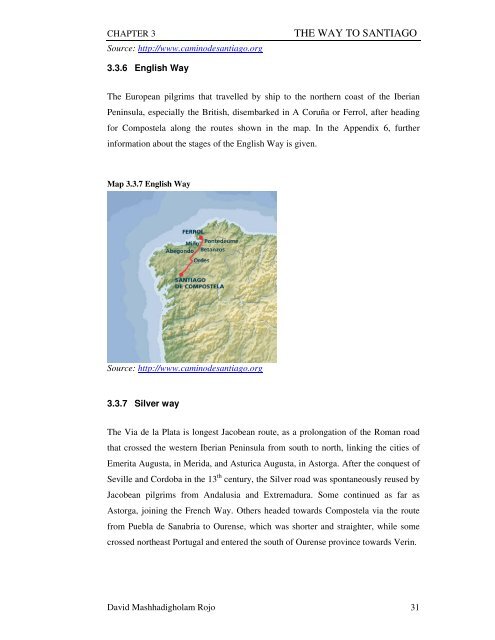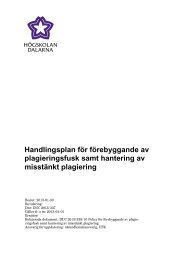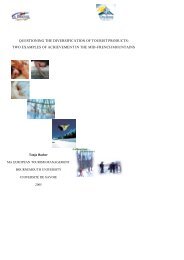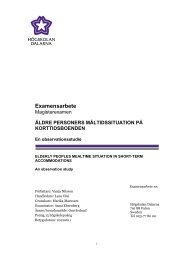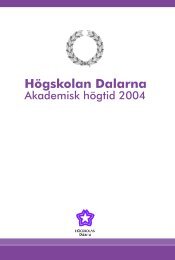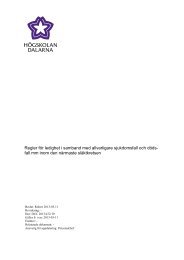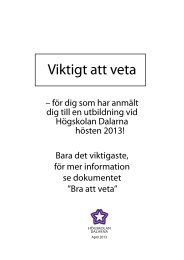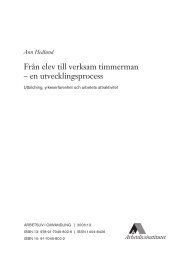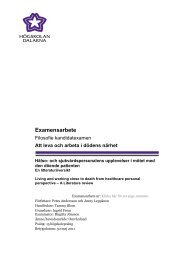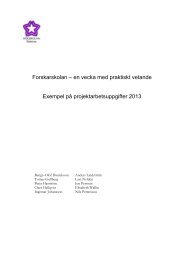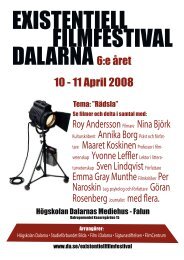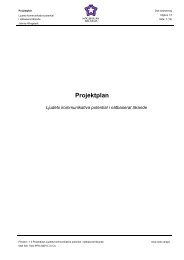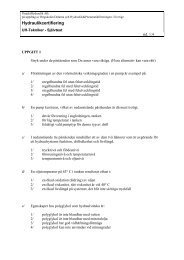Religious Tourism: The Way to Santiago
Religious Tourism: The Way to Santiago
Religious Tourism: The Way to Santiago
You also want an ePaper? Increase the reach of your titles
YUMPU automatically turns print PDFs into web optimized ePapers that Google loves.
CHAPTER 3 THE WAY TO SANTIAGO<br />
Source: http://www.caminodesantiago.org<br />
3.3.6 English <strong>Way</strong><br />
<strong>The</strong> European pilgrims that travelled by ship <strong>to</strong> the northern coast of the Iberian<br />
Peninsula, especially the British, disembarked in A Coruña or Ferrol, after heading<br />
for Compostela along the routes shown in the map. In the Appendix 6, further<br />
information about the stages of the English <strong>Way</strong> is given.<br />
Map 3.3.7 English <strong>Way</strong><br />
Source: http://www.caminodesantiago.org<br />
3.3.7 Silver way<br />
<strong>The</strong> Via de la Plata is longest Jacobean route, as a prolongation of the Roman road<br />
that crossed the western Iberian Peninsula from south <strong>to</strong> north, linking the cities of<br />
Emerita Augusta, in Merida, and Asturica Augusta, in As<strong>to</strong>rga. After the conquest of<br />
Seville and Cordoba in the 13 th century, the Silver road was spontaneously reused by<br />
Jacobean pilgrims from Andalusia and Extremadura. Some continued as far as<br />
As<strong>to</strong>rga, joining the French <strong>Way</strong>. Others headed <strong>to</strong>wards Compostela via the route<br />
from Puebla de Sanabria <strong>to</strong> Ourense, which was shorter and straighter, while some<br />
crossed northeast Portugal and entered the south of Ourense province <strong>to</strong>wards Verin.<br />
David Mashhadigholam Rojo 31


